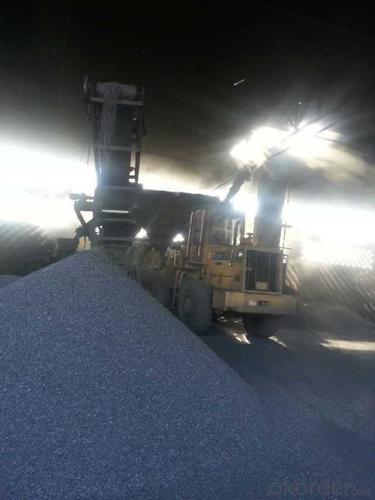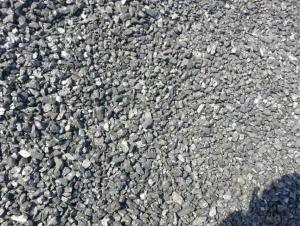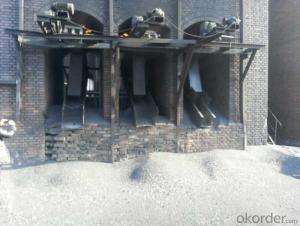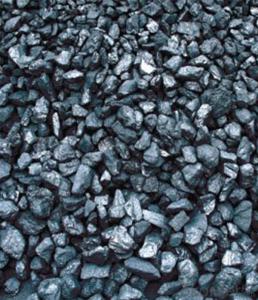FC 90%-95% Carbon additive
- Loading Port:
- China Main Port
- Payment Terms:
- TT OR LC
- Min Order Qty:
- -
- Supply Capability:
- -
OKorder Service Pledge
OKorder Financial Service
You Might Also Like
Specifications
Calcined Anthracite
Fixed carbon: 90%-95%
S: 0.5% max
Size: 0-3. 3-5.3-15 or as request
Calcined Anthracite is produced using the best Anthracite-Taixi Anthracite with low S and P, It is widely used in steel making and casting, Chemical and some other fields.
General Specification of Calcined Anthracite:
PARAMETER UNIT GUARANTEE VALUE | |||||
F.C.% | 95MIN | 94MIN | 93MIN | 92MIN | 90MIN |
ASH % | 4MAX | 5MAX | 6MAX | 7MAX | 8MAX |
V.M.% | 1 MAX | 1MAX | 1.5MAX | 1.5MAX | 1.5MAX |
SULFUR % | 0.5MAX | 0.5MAX | 0.5MAX | 0.5MAX | 0.5MAX |
MOISTURE % | 0.5MAX | 0.5MAX | 0.5MAX | 0.5MAX | 0.5MAX |
Size can be adjusted based on buyer's request.
Pictures of Calcined Anthracite:

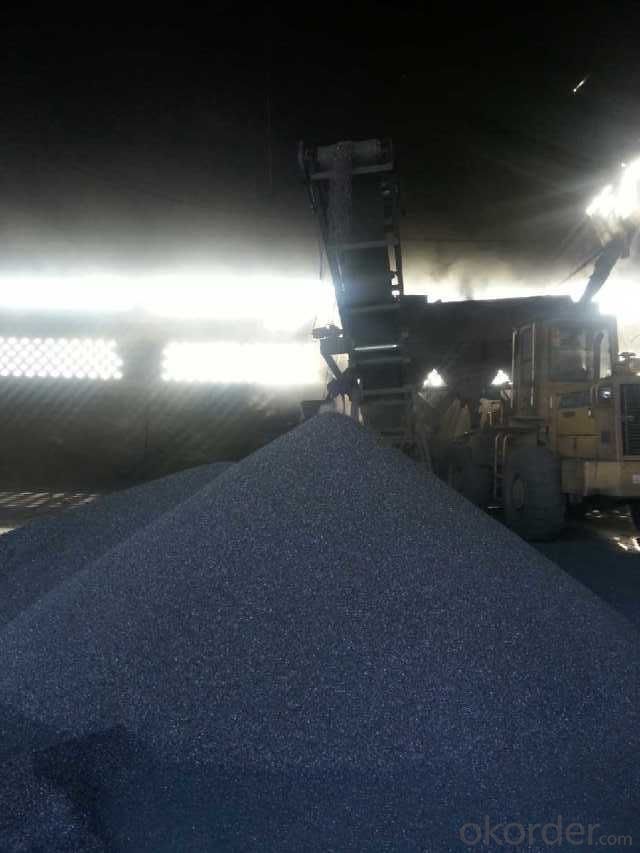
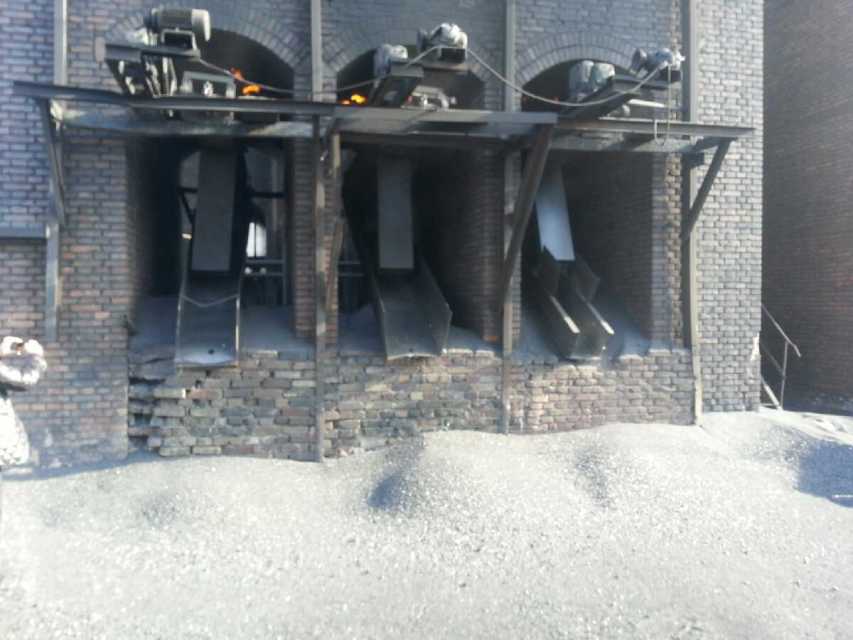
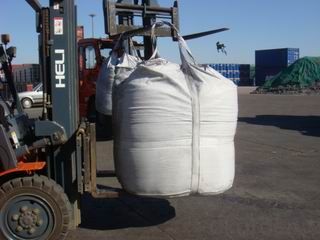
We can supply below furnace charges, please feel free to contact us if you areinterested in any of any of them:
Coke (Metallurgical, foundry, gas)
Calcined Anthracite with fixed carbon from 90% to 95%
- Q: How does carbon affect the formation of acidification in lakes?
- Carbon dioxide (CO2) dissolved in water forms carbonic acid (H2CO3), which lowers the pH level of the water. This acidic environment can lead to acidification in lakes and other bodies of water.
- Q: Want advanced reinforcement, but I do not know where the high furnace rock carbon, looking for someone to guide...
- Landlord Hello, there are 51 bags sold in the mall, send the hope to adopt, thank you!
- Q: A carbon Roast Lamb Leg stores need to how much money
- You buy yourself a Roasted Whole Lamb furnace, generally in the 2600-3000 Roasted Whole Lamb Roast Lamb Leg can fix, baking method will provide. Can buy Roasted Whole Lamb furnace Ji'nan Thebaud Hardware Products Co. Ltd.
- Q: How is carbon used in the production of batteries?
- Carbon is an essential component in the production of batteries due to its unique properties. It is commonly used as an electrode material in both primary (non-rechargeable) and secondary (rechargeable) batteries. In primary batteries, carbon is used as a cathode material. It acts as a host for the chemical reactions that occur during the discharge process, enabling the flow of electrons. Carbon's high conductivity is crucial in ensuring efficient electron transfer, allowing the battery to deliver power effectively. Additionally, carbon's stability and low reactivity make it an ideal material for long-lasting primary batteries. In secondary batteries, such as lithium-ion batteries, carbon is utilized in both the anode and cathode. The anode consists of graphite, a form of carbon that can intercalate lithium ions during charging and release them during discharging. This process allows for the reversible storage and release of energy, making graphite an excellent choice for the anode material. Carbon is also used in the cathode of secondary batteries, where it enhances the overall performance. Carbon-based materials, like carbon black, are added to the cathode to improve its electrical conductivity and increase the surface area available for reactions. This leads to higher energy and power densities, improving the battery's overall performance. Furthermore, carbon additives, such as carbon nanotubes or graphene, are being explored to enhance battery performance further. These carbon-based materials have unique properties like high surface area, high electrical conductivity, and mechanical strength, which can potentially improve the energy storage capacity and lifespan of batteries. In summary, carbon plays a vital role in battery production by enabling efficient electron transfer, storage, and release of energy. Its conductivity, stability, and ability to intercalate ions make it an essential component in both primary and secondary batteries, contributing to the advancement of energy storage technology.
- Q: How does carbon impact the availability of freshwater resources?
- Carbon can impact the availability of freshwater resources through its role in climate change. Increasing carbon emissions lead to a rise in global temperatures, causing changes in precipitation patterns and melting of glaciers. These changes can result in droughts, reduced snowpack, and altered river flows, ultimately affecting the availability and quality of freshwater resources.
- Q: How does carbon affect the water cycle?
- Carbon affects the water cycle primarily through the process of photosynthesis, where plants and algae absorb carbon dioxide from the atmosphere and release oxygen. This process not only regulates the carbon dioxide levels in the atmosphere, but also influences the temperature and precipitation patterns, subsequently impacting the water cycle. Additionally, carbon dioxide dissolves in water, forming carbonic acid, which can alter the pH levels of water bodies and potentially affect aquatic life and the overall balance of the water cycle.
- Q: How does carbon affect the fertility of soil?
- Soil fertility relies on carbon, which has a significant impact on various soil properties and processes. The addition of carbon to the soil improves its structure and ability to hold water. Organic matter, abundant in carbon, serves as a food source for microorganisms. These microorganisms play a crucial role in nutrient cycling and soil aggregation as they break down organic matter into simpler compounds. This process releases essential nutrients that plants can readily access. Furthermore, carbon acts as a sponge, preventing the leaching of nutrients like nitrogen and thereby increasing their availability for plants. Additionally, soils rich in carbon have higher cation exchange capacity, enabling them to retain and release nutrients more efficiently. By maintaining and increasing soil carbon levels, we can enhance soil fertility, facilitate plant growth, and support sustainable agricultural practices.
- Q: What does carbon burning mean?
- Put the burning carbon under the iron plate and make a copy of it on the iron plate, that is, carbon burning!
- Q: How is carbon used in the production of fuels?
- Carbon is a critical element in the production of fuels, as it is the main component of fossil fuels such as coal, oil, and natural gas. These fuels are formed from the organic remains of plants and animals that lived millions of years ago. The process of carbonization or carbonization involves subjecting these organic materials to high pressure and temperature over a long period, which transforms them into hydrocarbon-rich substances. Coal, for example, is primarily composed of carbon, along with small amounts of other elements. When coal is burned, this carbon reacts with oxygen, releasing energy in the form of heat. This heat can then be utilized to produce steam, which drives turbines to generate electricity or to power engines in various industries. Similarly, oil and natural gas, which are also predominantly composed of carbon, are extracted from underground reservoirs. These hydrocarbons can be processed through refining to produce various types of fuels, such as gasoline, diesel, and jet fuel. The combustion of these fuels in engines or power plants allows for energy release, enabling transportation and the generation of electricity. In addition to fossil fuels, carbon is also used in the production of alternative fuels like biofuels. Biofuels are produced from renewable sources such as plants, algae, or agricultural waste. The carbon contained in these organic materials can be converted into ethanol or biodiesel through processes like fermentation or transesterification, respectively. These biofuels can then be used as substitutes for conventional fossil fuels, reducing greenhouse gas emissions and dependence on non-renewable resources. Overall, carbon is an essential component in the production of fuels, whether derived from fossil fuels or renewable sources. Its combustion releases energy, which is harnessed for various purposes, including electricity generation, transportation, and industrial processes. However, it is important to explore and adopt sustainable alternatives to fossil fuels, such as biofuels and renewable energy sources, to mitigate the negative environmental impacts associated with carbon emissions.
- Q: How are carbon fibers used in manufacturing?
- Carbon fibers are used in manufacturing for their exceptional strength, light weight, and high stiffness properties. They are commonly used as reinforcement materials in various industries such as aerospace, automotive, sports equipment, and wind energy. Carbon fibers are incorporated into composites to enhance the strength and durability of products, making them ideal for applications where weight reduction and structural integrity are crucial.
Send your message to us
FC 90%-95% Carbon additive
- Loading Port:
- China Main Port
- Payment Terms:
- TT OR LC
- Min Order Qty:
- -
- Supply Capability:
- -
OKorder Service Pledge
OKorder Financial Service
Similar products
Hot products
Hot Searches

